|
Here I have mounted a very dry piece of oak, about 6" long and 2 1/2" diameter, between centers on my Craftsman lathe. It is roughly perpendicular to the lathe bed and close to centered on the diameter of the log.
|
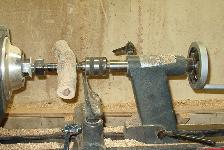
|
|
Turning at about 1200 rpm, the shape is roughed and the bottom flattened to receive a glue block. I do not bother to remove any of the inside at this time.
|
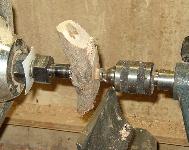
|
|
While the glue gun heats the nub at the bottom of the piece is chiseled off and the glue block prepared on a face plate.
|
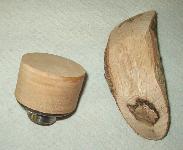
|
|
With the glue block mounted and the piece returned to the lathe, it is ready to continue. Here I have placed it on my Record bowl lathe because I like to work with face plate shapes on it. I could have mounted it to the Craftsman. A bowl lathe is not necessary, just nice.
|
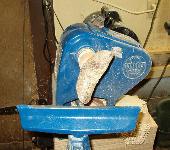
|
|
The outside is turned and ready for sanding. This lathe has three speeds chosen by moving a belt. I will both turn and sand this piece at 1200 rpm. The only tool used is a 1/4" Oland tool and a parting tool to remove the piece from the glue block.
|
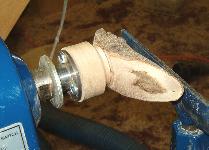
|
|
The inside is turned and ready to sand. I power sand working my way up to 2000 grit. It may be a bit excessive given the porous nature of the oak, but it only takes a minute or two for each grit after 120, and I like the look.
|
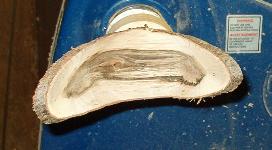
|
|
The piece is sanded and ready for a coat of tung oil before parting off the lathe. To part from a hot glue block, just part in with a standard parting tool to about an inch or a bit less in diameter, stop the lathe, and gently pry the piece away. The friction of the parting cut will soften the hot glue just enough to release it.
|
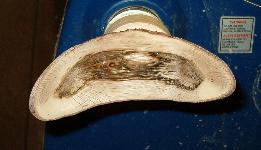
|
|
Here it is again with that coat of tung oil, as well as with two of it friends, one in oak and the other in maple.
|
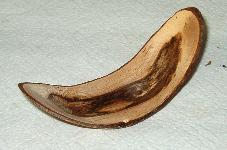
|
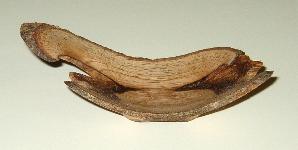
|
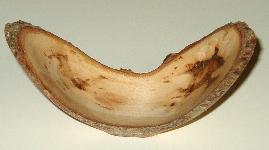
|

